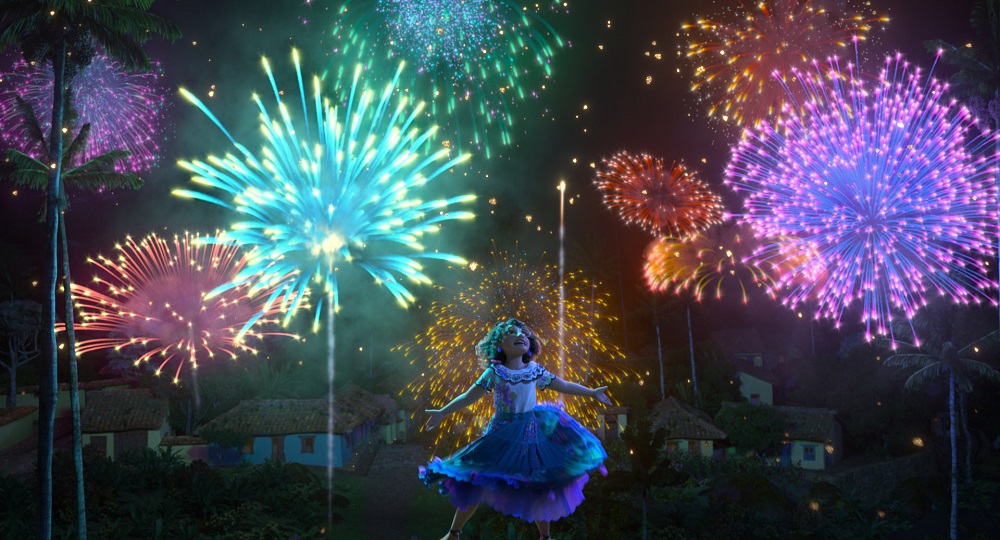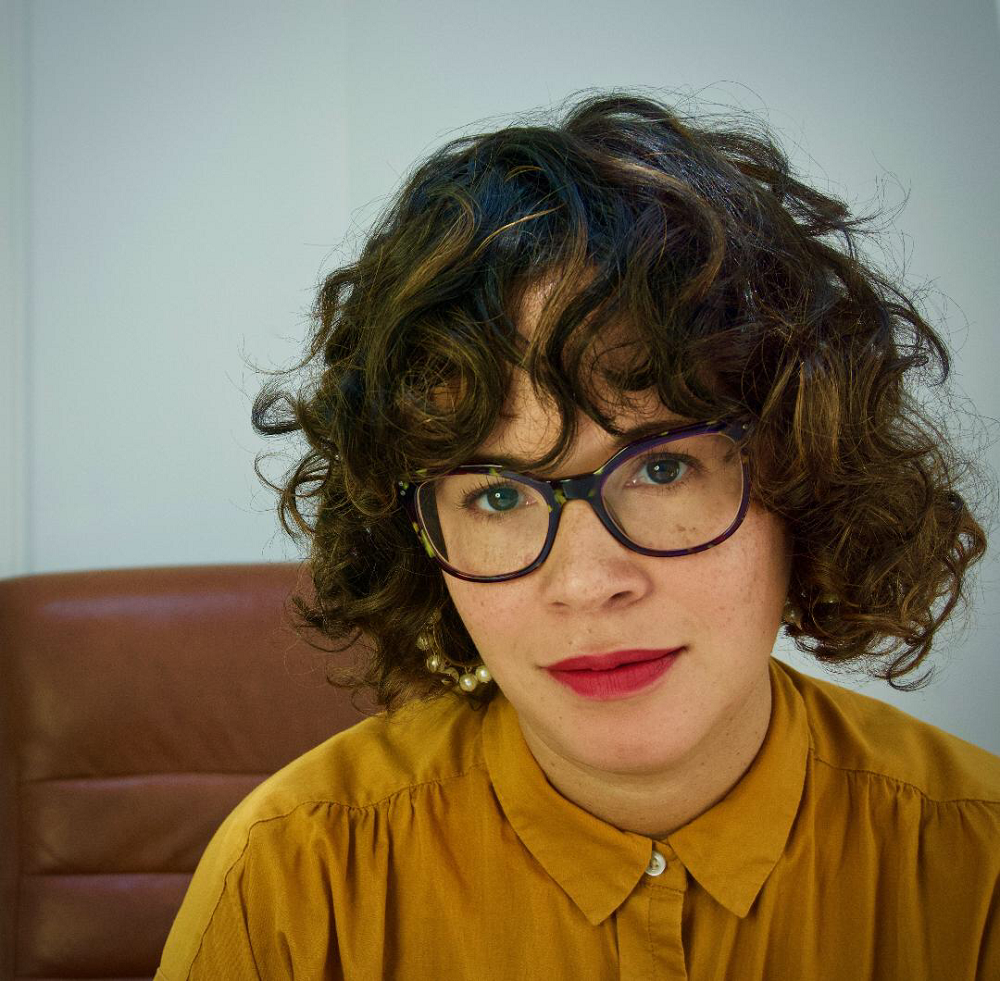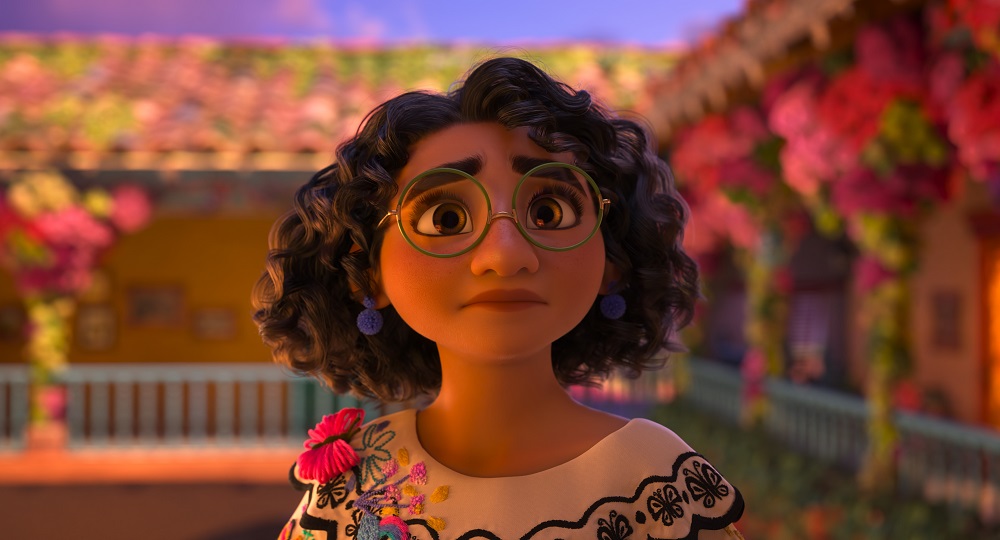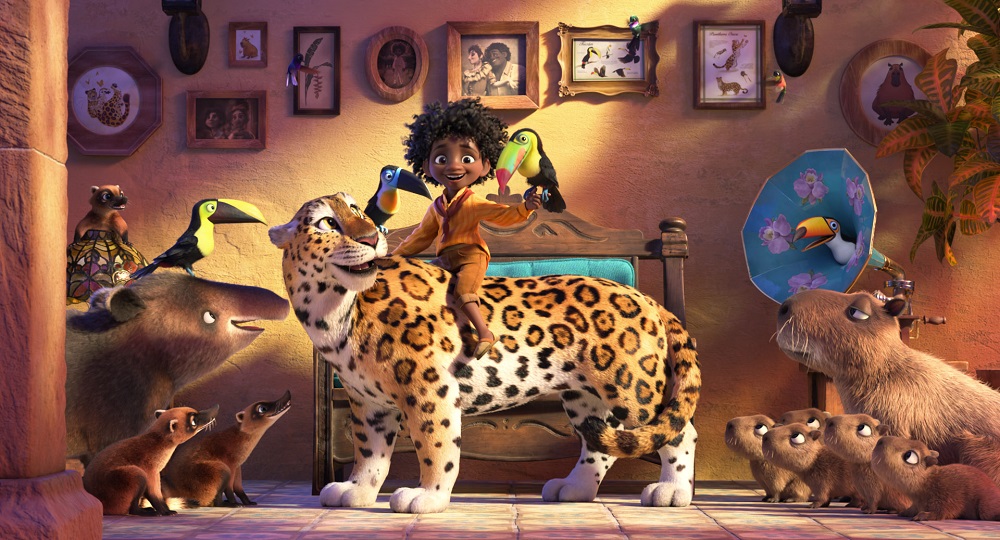
Charise Castro Smith started her career as an actress and playwright at the prestigious Yale School of Drama. After several years putting on plays and acting in bit parts on TV, since 2015 she has transitioned to writing for episodic television including Devious Maids, The Exorcist, Sweetbitter, and The Haunting of Hill House.
Now Smith is making the leap to features in the biggest -and most unorthodox- way possible by co-writing and co-directing Walt Disney Pictures’ newest hit animated film Encanto. It revolves around a Colombian family with the last name Madrigal who are all imbued with magical powers… all except the black sheep of the family, Mirabel (voiced by Stephanie Beatriz).
We got the opportunity to chat 1:1 with Smith about assuming directing responsibilities on a giant event animated film while having no actual animation background, and how that was actually a big plus. She also discusses how her theater work inspired this new career transition, as well as getting to work with legendary songwriter Lin-Manuel Miranda.
Below the Line: You didn’t really have a traditional animation background, right?
Charise Castro Smith: That assumption is correct. I was an actor for a long time. I went to the Yale School of Drama as an actor, and then while I was there started writing plays and was a playwright for several years. Then I was a writer/producer in television for about six years before my agent sent a play of mine to Disney Animation Studios, and they brought me on board.

BTL: Since you didn’t graduate from Cal Arts and come up the same way a lot of other Disney directors do, can you define your co-director job in relation to what Byron Howard and Jared Bush did?
Smith: They initially brought me on as a writer, and Jared and I were developing the script for about nine months before they asked me to come on and co-direct. It was a whirlwind education in animation. The three of us spent a lot of time in editorial. We spent a lot of time recording actors, designing the look of the world, the characters. Byron has an incredible 25-year history, starting out as a storyboard artist to becoming an animator, so he was really in charge of directing animation. I’d say the three of us were involved heavily in the voice performances, and really making the story come to life.
BTL: You mentioned storyboarding. How much input were you able to put into the nuances of character performances within the animation itself?
Smith: A fair amount. I think animation is so different than any other field that I’ve worked in, and that it is just so profoundly hyper-collaborative. Every single frame of this movie has been touched by… there’s 800 people total on our crew. So every single aspect of this movie only happens because of the passion and dedication of so many people, designers, lighters, riggers, animators. It’s a massive, massive undertaking and so different from my live-action background because you know, The Haunting of Hill House you could just take a camera and put it in a spooky room. Here somebody has to design every single detail of the spooky rooms.
BTL: This is so fascinating to me because in the last few years I’ve talked to Rodney Rothman, who co-directed Spider-Man: Into the Spider-Verse, and also Scott Mosier, who co-directed The Grinch. Neither of those guys were animators, they were like you in that they came from a writing background. It’s like a sea change that’s happening in the industry where they’re starting to realize it’s good to have the Cal Arts animation grads in there, but it’s also good to have somebody whose main expertise is story and character.
Smith: Yeah, I mean, I give Disney Animation a lot of credit. They brought out a few new directors in the last year. Carlos López Estrada just directed Raya and the Last Dragon and obviously, he directed Blindspotting, too. So his background is mostly live-action. He’s working on another film there now. At least during my time, they’re bringing on a lot of new voices. Qui Nguyen who was also a playwright and worked in television was a screenwriter on Raya. Adele Lim was another one. So I do think that the studio at large and maybe even animation, in general, is recognizing the value of other perspectives.
BTL: Lin-Manuel Miranda was involved from a much earlier point in the development, around 2016. As you came in was he still evolving the songs parallel to your story? Or was it kind of a fill-in-the-blank situation for Miranda? Like, “then there’s a song about this, this and this”?
Smith: When I came in, there was not one song that had been written yet. I started just a little bit over three years ago, and at that point, there wasn’t even a script. There was a concept and a location and an idea. But no, we really started from the ground up. We had our first internal screening of the film in January of 2019, and that’s when we had our first song from Lin, which was the first song in the movie, the Family Madrigal song which was like this crazy explosion of exposition and color and 12 family members. Lin had this amazing idea that you wanted to just sort of put it all out there in one song and he did! It really set the tone for the rest of the movie and set the tone for how we worked with him. He was just an amazing collaborator, really, really generous and was working so closely with Jared and me on the script. The entire time we would sort of have an idea of what the song was, and send him a monologue or a dialogue scene of sort of what we thought it needed to convey. I remember getting these emails on my phone from him with an mp3 of a new song that he had recorded and just feeling like I had the most amazing secret in the world. Like, I can’t believe I get to hear this first. It was such a cool experience hearing his fresh demo tracks.

BTL: Someone told me once that there are only two types of stories: A castle story or a quest story. Encanto is interesting because even though it is contained, the castle IS the quest, essentially.
Smith: I’ve never heard that theory, but that makes a lot of sense. It’s an interesting way of looking at it. Yeah, I think we sort of got both going on, right? Because she’s on a quest within her castle. Pretty deep in the bones of the story, but when Jared and I were rewriting the script we were thinking a little bit about Oedipus and how that story is about someone unraveling a mystery with themselves at the center of it. That was a structural guiding light for us. But you know, obviously, different ending.
BTL: Did your theater background help you in envisioning a movie that is, essentially, bound to one general location yet still an expansive adventure?
Smith: Absolutely. My theater background helped me in so many ways, even the process of developing an animated film. I think it’s sort of a hybrid between a new play development process and a TV writers room because the new play you workshop at different theaters, you develop it sometimes over the course of multiple years before it’s performed. In a TVs writers’ room, obviously, there’s people pitching on the story, which in animation becomes the story team, the storyboard artists who are super heavily involved. Jared and I would send them script pages and as they would start to board the story out would have all sorts of insights and would be kind of going back and forth with us about different story points and trying to get more clarity. And I mean, 98% of the time they would have just brilliant ideas that would elevate what we had written beyond what we could have imagined. We screened the movie internally eight times from the first time to the end, and it got more and more complete as we went along.
BTL: Watching this movie, it was interesting to compare it to Coco, which came out a few years ago. Mexican mythology was central to that film, but Encanto almost seem more progressive in the sense that the mythmaking behind it could almost apply to any culture. The Latin/Colombian flavor is there, but you could do this story in England, you could do the story in China, you could do this story in Greece.
Smith: It’s interesting, we were really inspired by this incredible tradition of magical realism. As I was writing the script I was reading 100 Years of Solitude and Love in the Time of Cholera, and House of the Spirits and all these stories that take everyday people and situations and almost take for granted the fact that they are extraordinary or magical. Yes, it’s amazing that this story could feel universal, could be transplanted into any different culture. But at the same time, this idea of locating the extraordinary within the ordinary was really always at the center of how we were trying to think about the story. To me that feels extremely tied to magical realism and very grounded in Colombia.
BTL: Having been to Bogotá and the Sanctuary of Monserrate I can say there really is something magical about the mountain areas there, the high-elevation.
Smith: I was supposed to go on a research trip to Colombia, we had scheduled everything for March 20th of 2020. So I ended up not getting to go myself. But Disney, to their credit, I think really took seriously this idea of grounding it in the culture, making it relatable, making it something that represented that culture in not just a surface way, but in a profound way. We were surrounded at all times by really incredible experts in lots of different fields. We had an architect on board, a botanist, cultural experts, filmmakers who were with us that we met with almost every week who were talking to us about the story, watching reels, giving us feedback. It was a different way of working than I had ever worked before. I really give the studio and the leadership of the studio a lot of credit in how seriously they took this project.

BTL: I read somewhere that you’re a big fan of ’70s horror movies?
Smith: I do love The Shining. That’s another house that’s alive. As you know, I’ve always been really just drawn to all sorts of genres, but I think there’s something about the enchanted or evil/powerful house that really has taken on a huge place in my imagination because houses, especially family homes, take on the energy of the people that live there and are a reflection of the people that live there. Whether that energy is evil and terrifying or whether that energy is life-giving and warm and funny, I’ve just always been captivated by this idea of places having spirits and places holding memory, places having a history that actually presents itself as we live in those spaces.
BTL: The other day on TCM, I re-watched the Robert Wise Haunting and there are indeed some crazy parallels to the sentient house in Encanto. The house groaning and doors opening and closing, things like that.
Smith: Actually, when we were working on Hill House, that was really our main source of inspiration, because obviously, there’s a novel and there was a more recent film, but that one was the one that we really dug into and embraced as the sort of groundwork for that series.
Encanto is now playing in theaters nationwide. All photos courtesy and copyright Walt Disney Pictures Animation.





